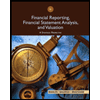
a.
To explain: whether it is true or false if a firm repurchases its stock in open market and the shareholder who tender the stock are subject to
Introduction:
Dividend Policy: It is the rules and regulations or protocol which a company sets to share its earning with its shareholders Dividend’s payment include payment to be made legally as well as financially.
b.
To explain: whether it is true or false if holder of 100 shares will own 200 share after company’s stock splits 2 for 1.
c.
To explain: whether it is true or false if dividend reinvestment plan maximizes the amount of equity capital available to the firm.
d.
To explain: whether it is true or false that tax codes encourages company to pay a large percentage of their net income in the form of dividends.
e.
To explain: whether it is true or false if company’s investors who prefer large dividends is unlikely to adopt a residual dividend policy.
f.
To explain: whether it is true or false if all other things remain constant a firm’s dividend payout will tend to increase whenever the firm’s investment opportunities improve if it is following a residual dividend policy.
Trending nowThis is a popular solution!

Chapter 14 Solutions
Fundamentals of Financial Management, Concise Edition
 Intermediate Financial Management (MindTap Course...FinanceISBN:9781337395083Author:Eugene F. Brigham, Phillip R. DavesPublisher:Cengage Learning
Intermediate Financial Management (MindTap Course...FinanceISBN:9781337395083Author:Eugene F. Brigham, Phillip R. DavesPublisher:Cengage Learning EBK CONTEMPORARY FINANCIAL MANAGEMENTFinanceISBN:9781337514835Author:MOYERPublisher:CENGAGE LEARNING - CONSIGNMENT
EBK CONTEMPORARY FINANCIAL MANAGEMENTFinanceISBN:9781337514835Author:MOYERPublisher:CENGAGE LEARNING - CONSIGNMENT Financial Reporting, Financial Statement Analysis...FinanceISBN:9781285190907Author:James M. Wahlen, Stephen P. Baginski, Mark BradshawPublisher:Cengage Learning
Financial Reporting, Financial Statement Analysis...FinanceISBN:9781285190907Author:James M. Wahlen, Stephen P. Baginski, Mark BradshawPublisher:Cengage Learning Cornerstones of Financial AccountingAccountingISBN:9781337690881Author:Jay Rich, Jeff JonesPublisher:Cengage Learning
Cornerstones of Financial AccountingAccountingISBN:9781337690881Author:Jay Rich, Jeff JonesPublisher:Cengage Learning Managerial Accounting: The Cornerstone of Busines...AccountingISBN:9781337115773Author:Maryanne M. Mowen, Don R. Hansen, Dan L. HeitgerPublisher:Cengage Learning
Managerial Accounting: The Cornerstone of Busines...AccountingISBN:9781337115773Author:Maryanne M. Mowen, Don R. Hansen, Dan L. HeitgerPublisher:Cengage Learning





